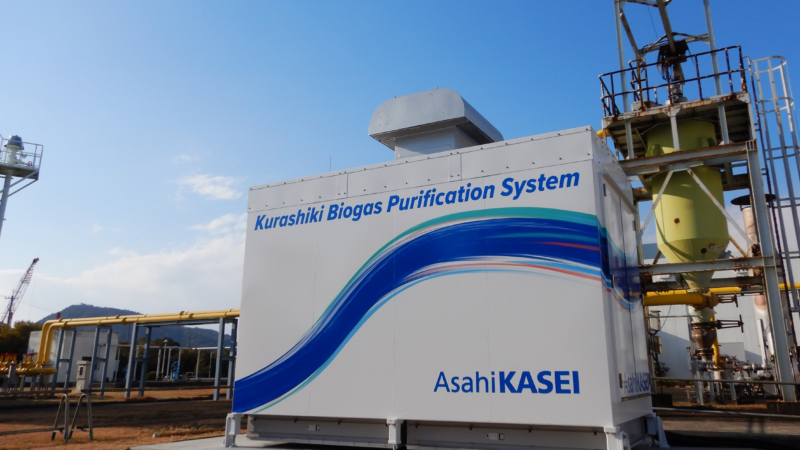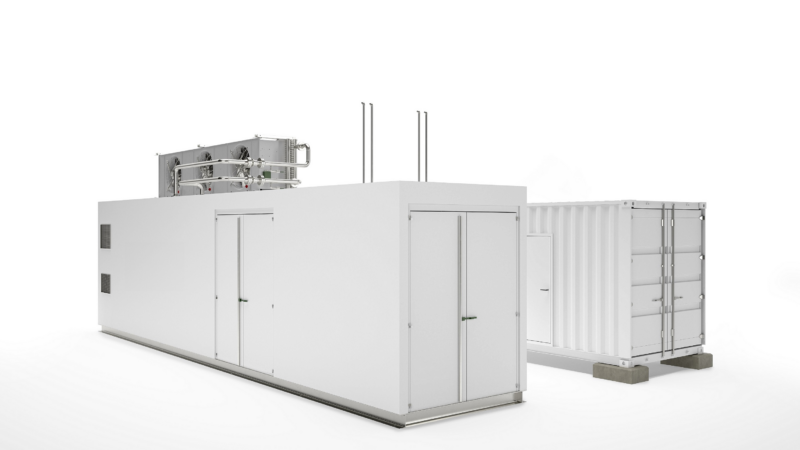The Eco-Impact: Easy to transport and ready for use with no assembly effort
BHS-Sonthofen developed the new, very compact, modular Eco-Impact recycling system especially for throughputs of up to 2 t/h and for use at different locations. It crushes electrical and electronic equipment that is no longer used and has its own complete manual sorting line as well as an automatic separation system for ferrous and non-ferrous metals. This means that the system is ideal for use in regions where the large-scale recycling of e-scrap has not yet been established.
BHS designed the system for electrical and electronic equipment with dimensions of up to 500 x 500 x 500 mm and a weight of up to 25 kg. At the heart of the Eco-Impact system is the new RS 1109 Rotorshredder. This crushes the old equipment at the same time as separating composite materials so that the individual components can then be removed by the combination of the manual sorting station and automatic separation system. At the end of the process, the material has been sorted into motor, armatures, copper pellets, capacitors, batteries, PCBs, and – depending on the configuration level – ferrous and non-ferrous metals.
The Eco-Impact comprises two modules arranged on two container platforms with dimensions of 5.8 x 2.3 x 3.0 m (L x W x H) each. This means that it is compact enough to be easily transported from one location to another by truck. Once it has arrived, it’s ready for use within just a few minutes.
Alfred Weber, Head of Sales for the Recycling Technology division at BHS-Sonthofen, sees the system as a starter package:
„We see the Eco-Impact as the most affordable way of entering the field of e-scrap recycling, both with regard to the low investment costs and to operation. The system is ideal for locations where large-scale recycling has not yet been established or is not possible from an economic point of view. The crushing process – which is very difficult to achieve manually – is carried out by the machine. The sorting process – which would require a level of technology that is simply not justifiable in the case of small volumes of scrap – continues to be carried out by workers.“
The first module contains the material input system (conveyor belt), a BHS type RS 1109 Rotorshredder, the drive elements, a dust extraction system, and the entire control system. The input material is placed into the conveyor belt input box manually and is fired against the inner wall – which is clad with sturdy HARDOX plates – with an enormous striking force by the fast-rotating impact tools of the Rotorshredder. The impact crushes the input material and separates composite materials.
The shredded material is crushed so that most of the components are exposed but batteries and capacitors, for example, are not destroyed.
The second module has four stations for manual sorting. It consists of the conveyor belts, a magnetic separator, and the storage containers for the sorted material. At the end of the sorting line, a magnetic separator removes the ferrous material. An automatic separator for non-ferrous metal is available as an optional extra.
Background: The BHS RS 1109 Rotorshredder
The newly developed BHS type RS 1109 Rotorshredder is at the heart of the system. It consists of a cylindrical work chamber with a vertical shaft. Hinged working tools are arranged in pairs, one above the other. The centrifugal force aligns them horizontally and stabilizes them. The input material is fed into the work chamber from above. When it enters the crushing radius of the tools, it is subjected to extremely intensive impact, collision, and shearing forces. Because the material is only in the rotor chamber of the machine for a short period of time, there is no thermal stress, so plastic parts can be easily separated from other materials,.
All parts that come into contact with the input material are made from wear-resistant steel and are easily replaced.
The power consumption optimizer of the Rotorshredder harmonizes the relationship between the required power, torque, and required current. The result: At all times, only the power that is actually needed is demanded – resulting in lower energy costs.
About BHS-Sonthofen
BHS-Sonthofen is an owner-operated group of companies in the machinery and plant engineering field, based in Sonthofen, Germany. The company offers technical solutions for mechanical process engineering with a focus on mixing, crushing, recycling, and filtration. With more than 360 employees and several subsidiaries, BHS-Sonthofen has a global presence.
The Recycling Technology division offers a wide range of machines and systems for the recycling industry. The product spectrum covers the processing of brittle waste materials such as electronic scrap, slag, shredder residue fractions, etc., and elastic materials such as tires, cables, and refuse-derived fuels. In agriculture, Biogrinders are used to shred substrates for the production of biogas.
For more information, see: www.bhs-sonthofen.de
Firmenkontakt
BHS-Sonthofen GmbH
Roland Schmid
An der Eisenschmelze 47
D-87527 Sonthofen, Germany
+49 8321 6099-231
press@bhs-sonthofen.de
http://www.bhs-sonthofen.de
Pressekontakt
VIP-Kommunikation
Regina Reinhardt
Dennewartstraße 25-27
52068 Aachen
+49.241.89468-24
reinhardt@vip-kommunikation.de
www.vip-kommunikation.de





